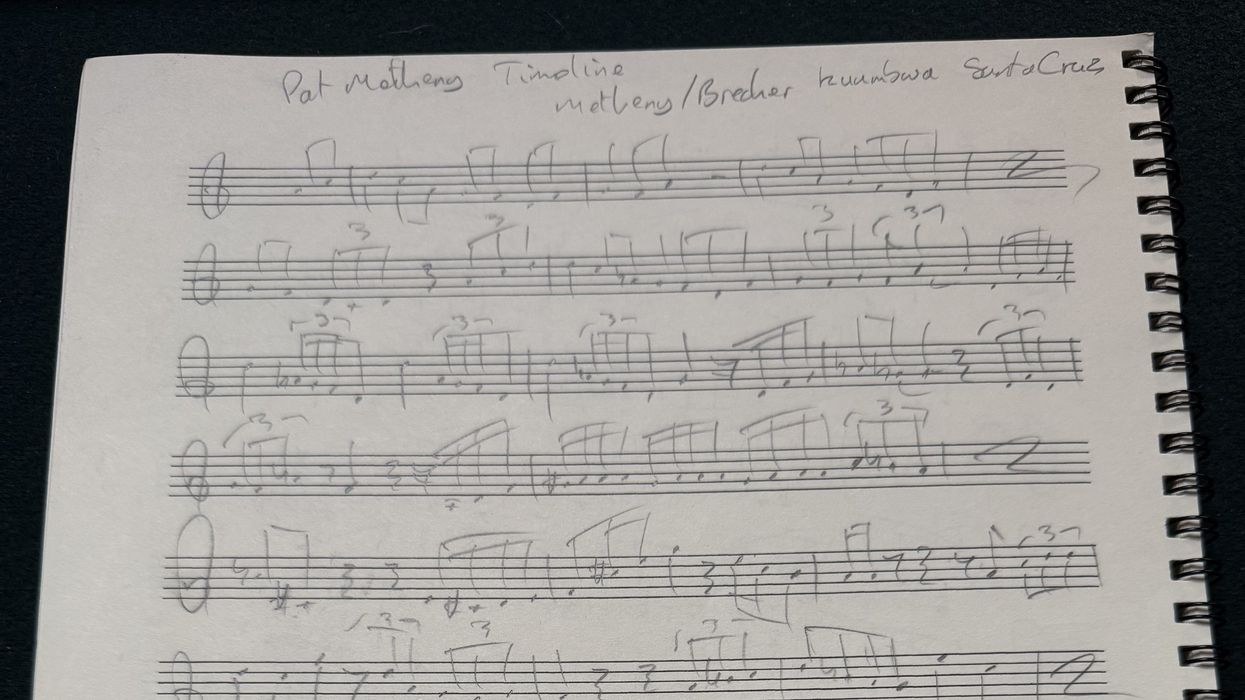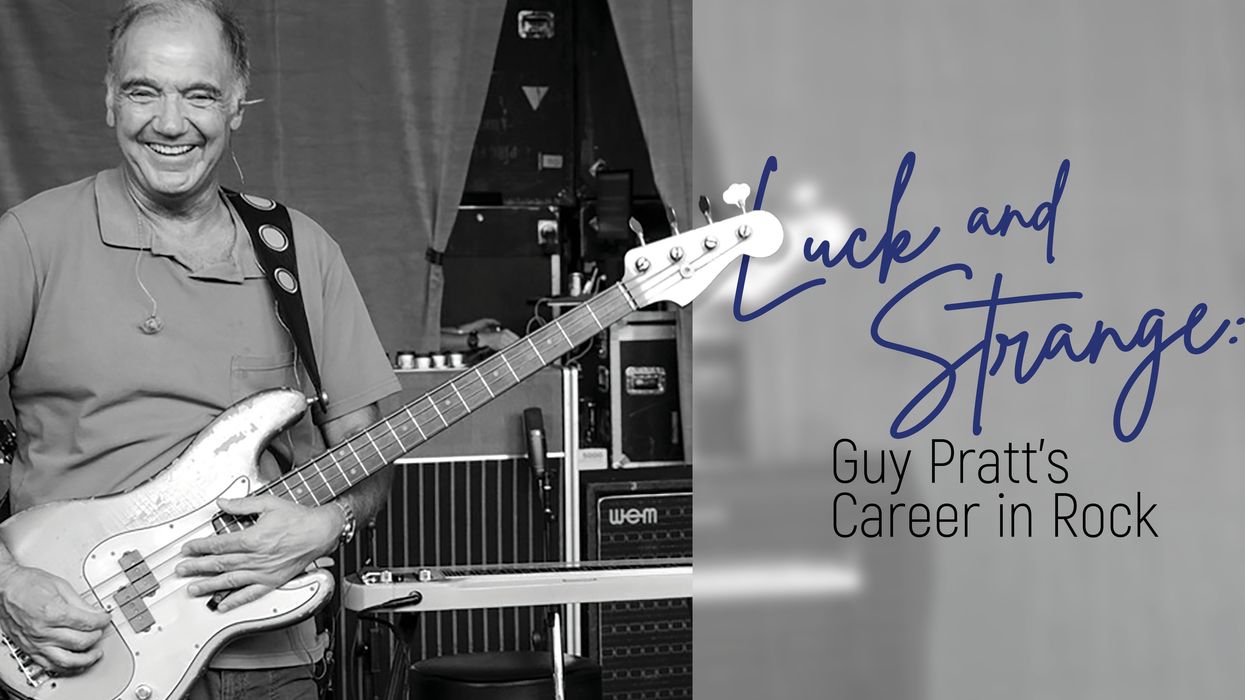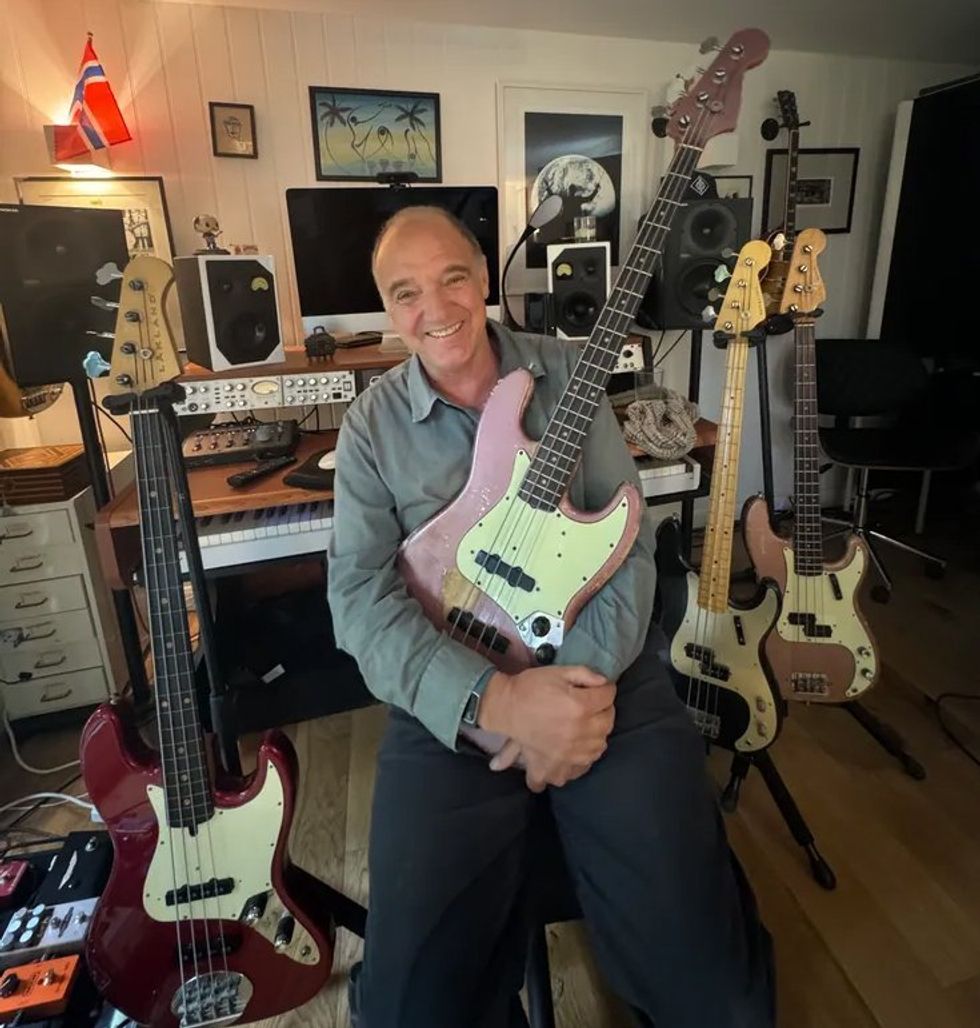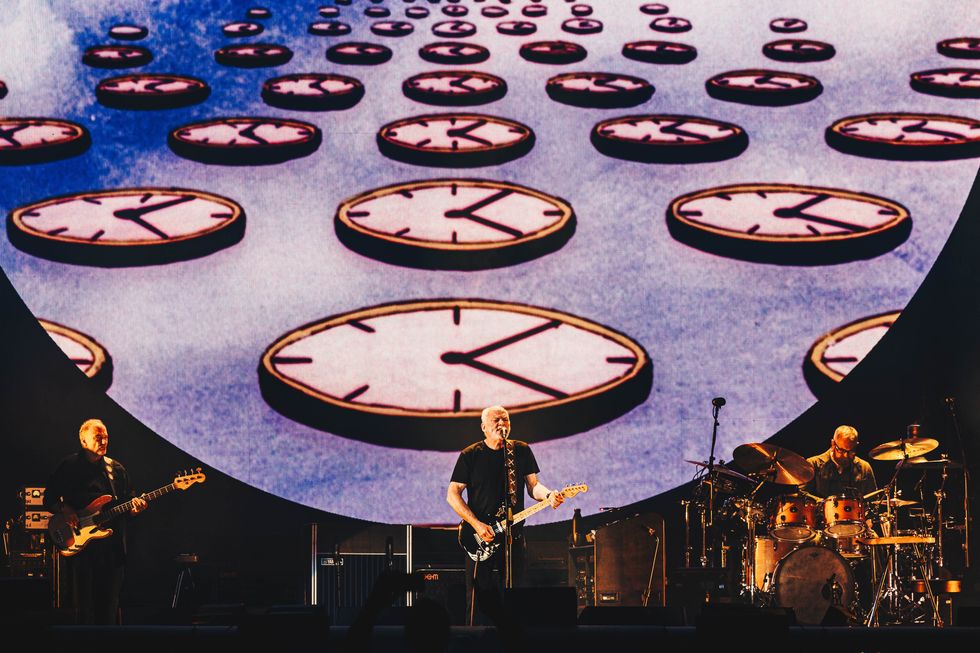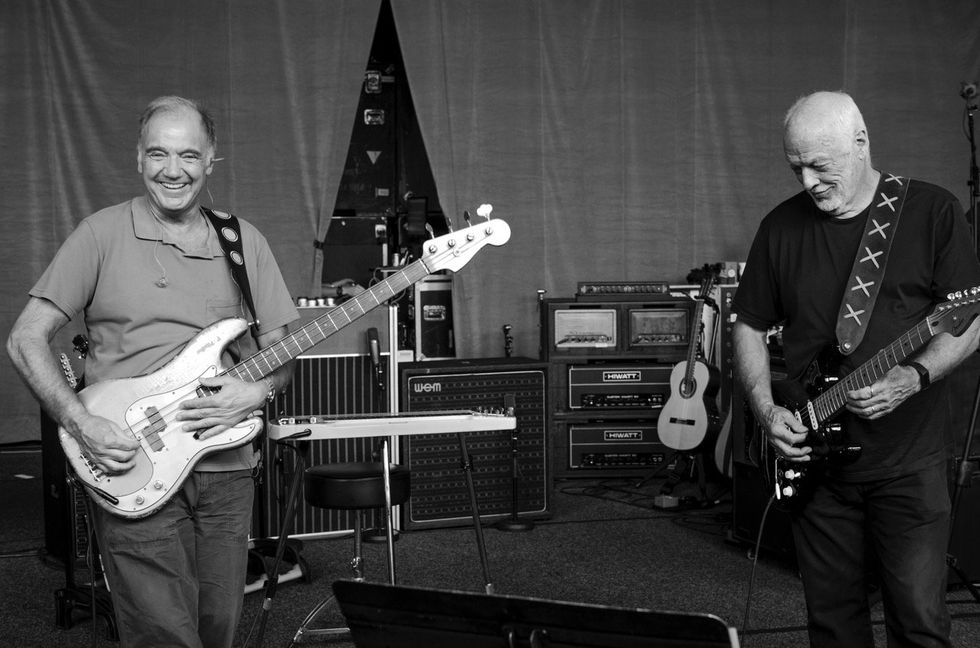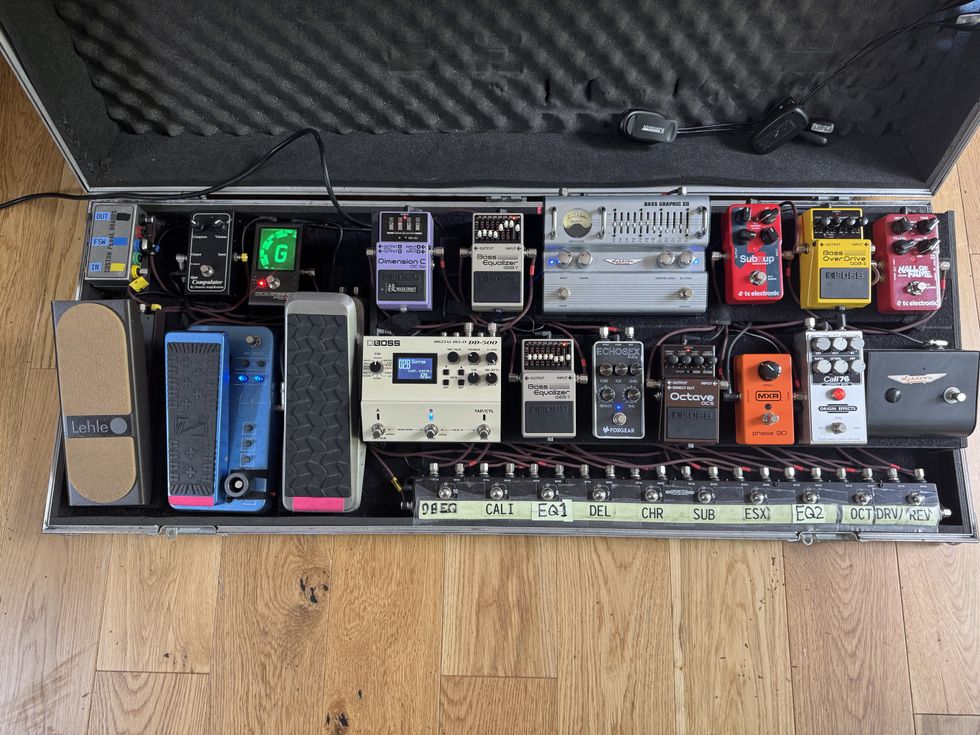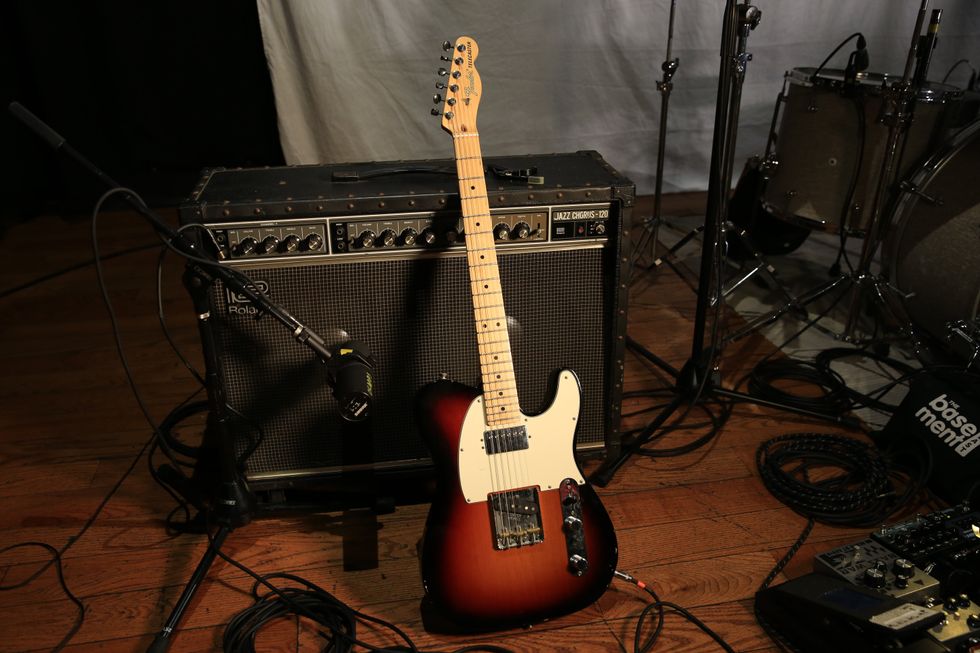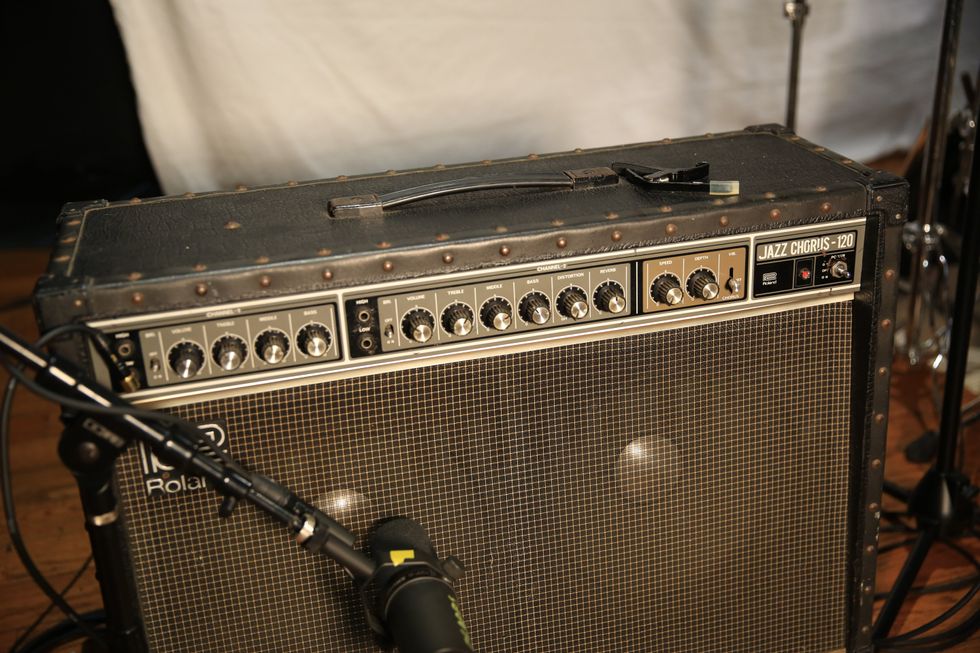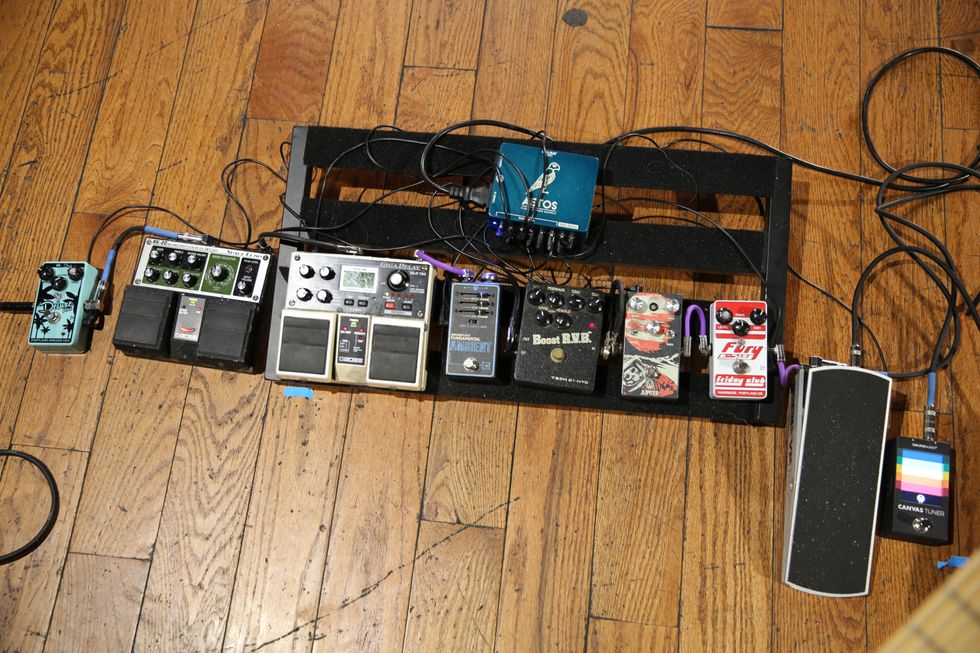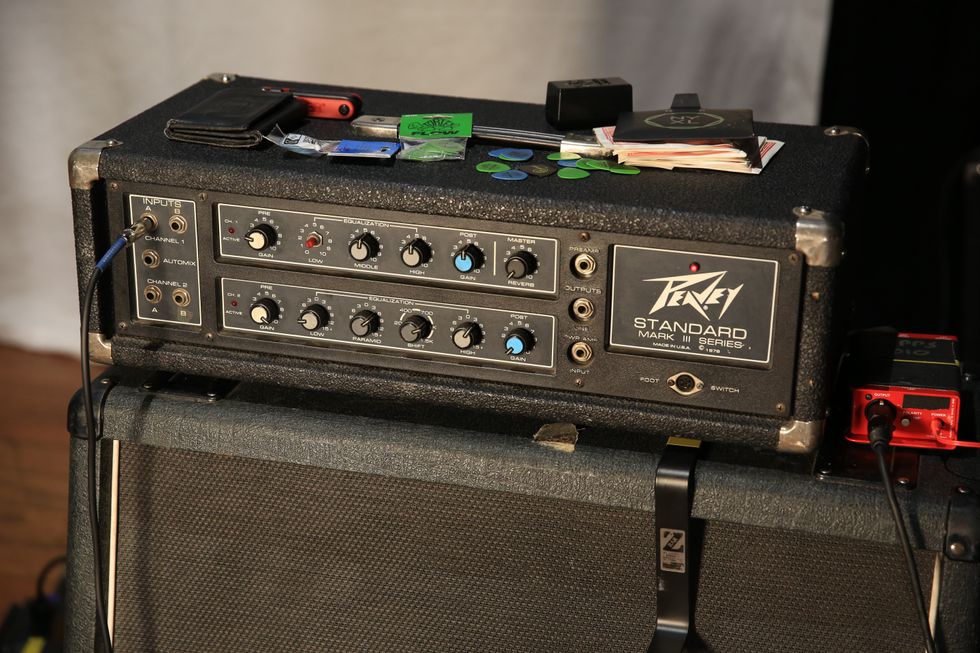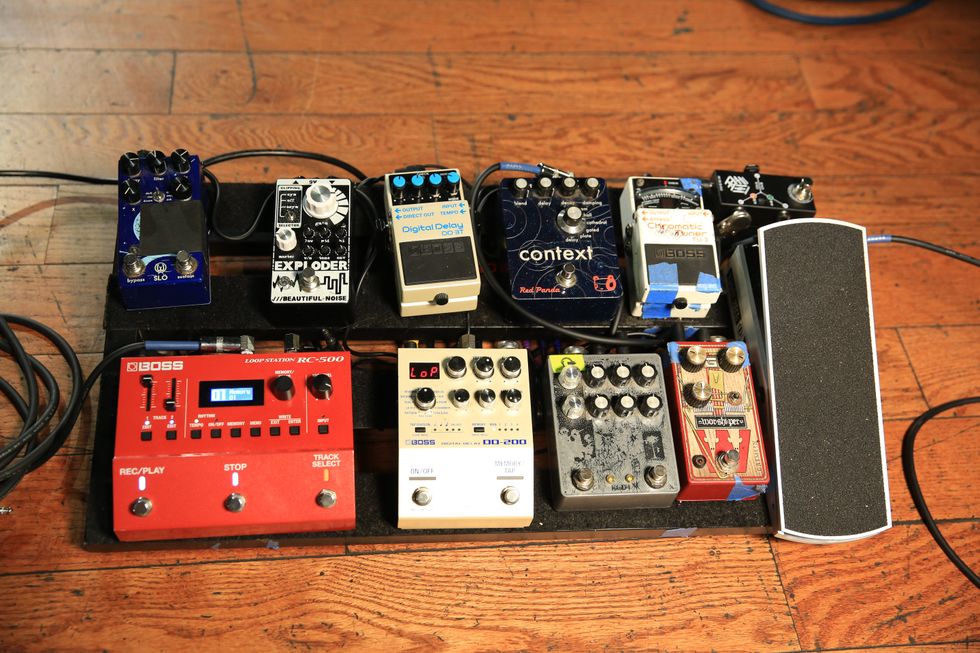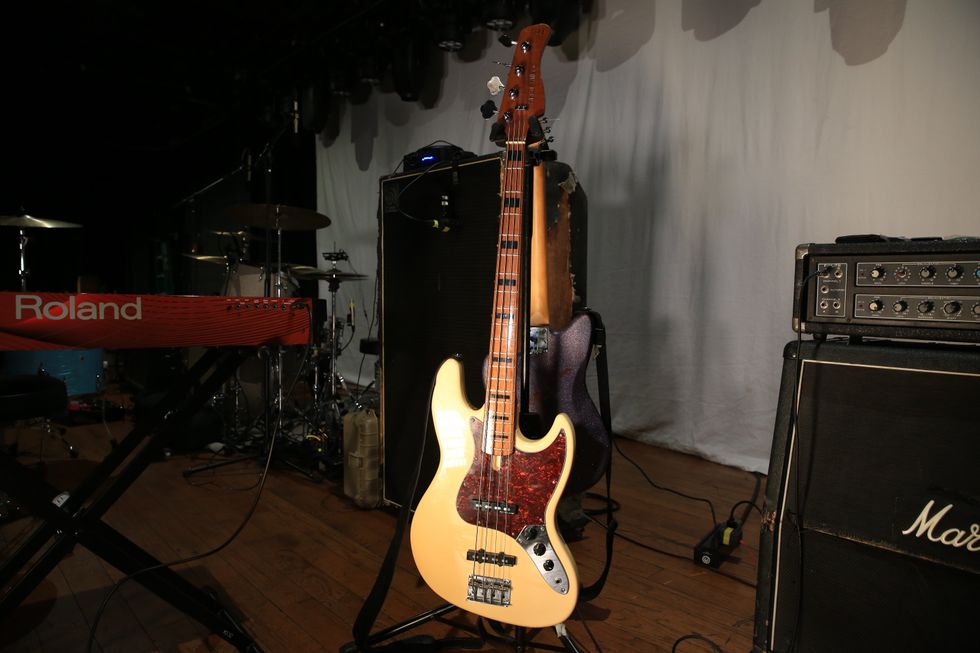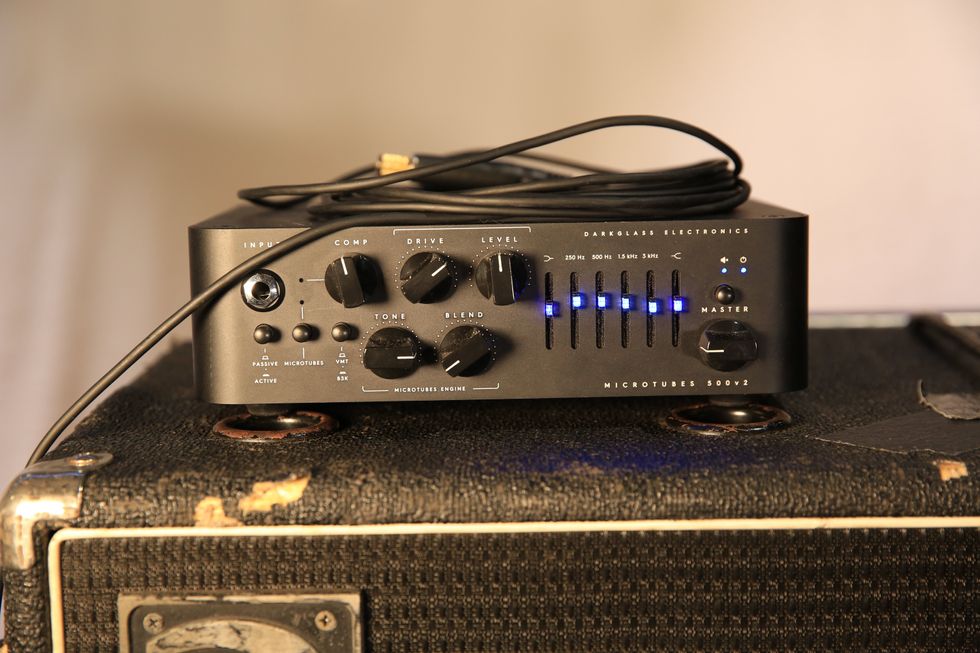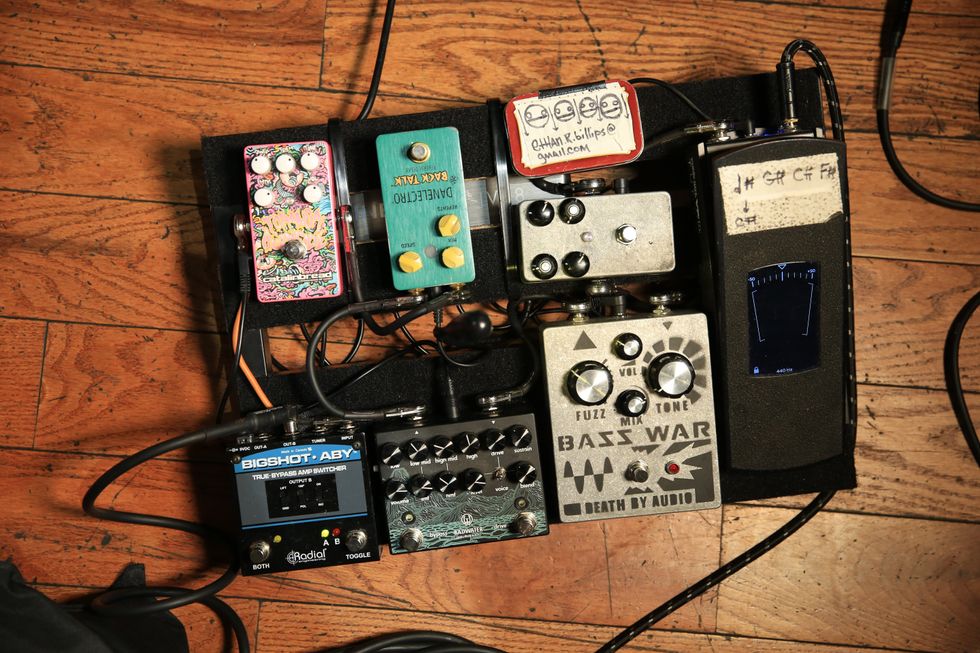Recorded direct into Focusrite Scarlett 2i4 interface into GarageBand.
Clip 1: Tone knob at 50 percent. Picked.
Clip 2: Tone knob rolled all the way off. Thumbed.
RatingsPros:Comfy build, cool look, and nice finish. Fat and full bass tone without floppiness. Cons: A tug bar would have been cool to keep with vintage vibe. Test bass in need of an intonation tweak. Street: $699 Schecter Banshee schecterguitars.com | Tones: Playability: Build/Design: Value: |
These are exciting times for fans of short-scale basses. Because of their increasing popularity, more and more options have been coming to market over the past several years. Shorties have long been a favorite of studio cats because of their fat and rich tone that sits nicely in a mix, but they’re also ideal for a range of other players. For those smaller in stature and/or hand size, beginners, or guitarists making the switch to a 4-string, less neck real estate to manage and quicker shifting and skipping are things few are going to complain about.
With close to 50 years in business, Schecter continues to be a force in the bass and guitar arena with their huge range of instruments and forward-thinking designs. For many, Schecter means metal, thrash, and hard rock because of the company’s legions of players who lean towards the heavy and dark side. But Schecter also has deep roots with more traditional instruments going back to their modest beginnings as a parts-only shop, and they’ve released their share of decidedly traditional-looking guitars and basses over the years. One such new addition is the Banshee bass, a 30"-scale monster that takes some cues from classic Fender style, but remains a 4-string go-getter all its own.
The Long and Short of It
As a P bass player, primarily, the short-scale Banshee’s classic single split-coil aesthetic spoke to me straight away. Like Schecter’s original Banshee guitar on which it’s based, the body cut somewhat resembles a Fender Mustang. The inspiration for the Banshee’s classic-looking 4-in-line headstock (not that common on most Schecters) also comes courtesy of the original Banshee, as does its shape and finish, which gives a flash of the natural maple underneath.
Other standout appointments on the Indonesia-made Banshee include offset/reverse pearloid fretboard inlays, a Tele-like control plate backing the volume and tone knobs, and Schecter’s stout high-mass bass bridge, which can be top loaded or strung through. Another nice touch is the spoke-wheel truss-rod nut (which I didn’t need to use), for super-easy neck-heel adjustments. Our test bass was finished in olympic white, and the Banshee is also available in carbon grey and vintage pelham blue.
What grabbed me from the get-go is the Banshee’s feel. I’m most at home with a standard-scale bass, but I do like mixing it up from time to time with a shortie, because, well, they’re fun and fast. The Banshee doesn’t disappoint with its thin, C-shaped 5-bolt neck and balance. When strapped on, there was little to no neck dive from my desired position, and at just a hair over 8 pounds, it’s easy on the shoulders and back. The Banshee’s neck is capped with a rosewood fretboard, its backside kissed with a fast, satin finish, and its nut width will be pleasing to Jazz players at 1.5". The smooth fretwork and action aided in easy shifting, and the construction overall was impressive. All the hardware was locked down clean and tight, and I didn’t come across a single ding, scratch, or glue miscue.
For electronics, the Banshee is outfitted with the simple, tried-and-true combo of a single split-coil managed by a volume and tone knob. I ran the bass through a GK 800RB/Orange OBC212 combination, and later plugged direct into a Focusrite Scarlett 2i4 interface to my DAW.
Get Width It!
Starting out with the tone at about 50 percent, I was introduced to the Banshee’s vintage-vibed timbre. It has noticeable P bass characteristics, with its solid lows, but the tone is certainly thicker, fatter, and boomy. The Banshee doesn’t feel or sound overly floppy, like some other shorties I’ve played, nor did I experience noticeable fret buzz. It should be said, however, that our test bass did have some intonation blips in the higher register and away from the money notes—most evident on the 4th string—but I think they could be easily remedied with a setup.
Rolling the tone down a bit and fingerpicking near the pickup produced a more old-school timbre, apt for Motown-inspired licks. And when taking the tone almost all the way down and thumb picking towards the neck, the Banshee showed that it will get along with reggae and dub, too. Its darker tones are certainly woofier and woolier here, but not to the point of being too muddy with little definition, probably also thanks in part to the new strings. And speaking of strings, I’m confident the Banshee would pair nicely with a set of flatwounds.
When I favored the other side of the responsive tone control by diming it and using a plectrum, the Banshee shined as a rock machine that was begging for more aggressive post-punk and power-pop runs. I’m typically a heavy hitter with a pick, but the Banshee was responsive for a short scale and held up to a stronger attack. The Banshee probably won’t win any slap contests, and, nope, the Banshee doesn’t have the same tight zing, snap, and top end of a standard-scale instrument. But, that said, my treble frequencies were plenty pronounced for a hard-hitting sound that worked especially nice with a good-sized dose of overdrive in the signal.
The Verdict
Banshees are known to wail, and the Schecter Banshee can do so, but it makes its mark with its thick and powerful low end. Its DNA couldn’t be much simpler, with a single pickup and single tone control, so I’ll call the Banshee elegantly simple thanks to its subtle but noteworthy aesthetic features that set it apart from the growing number of available short-scale basses. Its combo of deep-fat tones and smooth playability make the Banshee a blast to play, and, in turn, hard to put down. And while it’s probably a bit pricey for a beginner’s bass at 700 bucks, I think it still brings plenty of bang as a well-built, big-sounding shortie that would make a useful addition to a player’s stable.




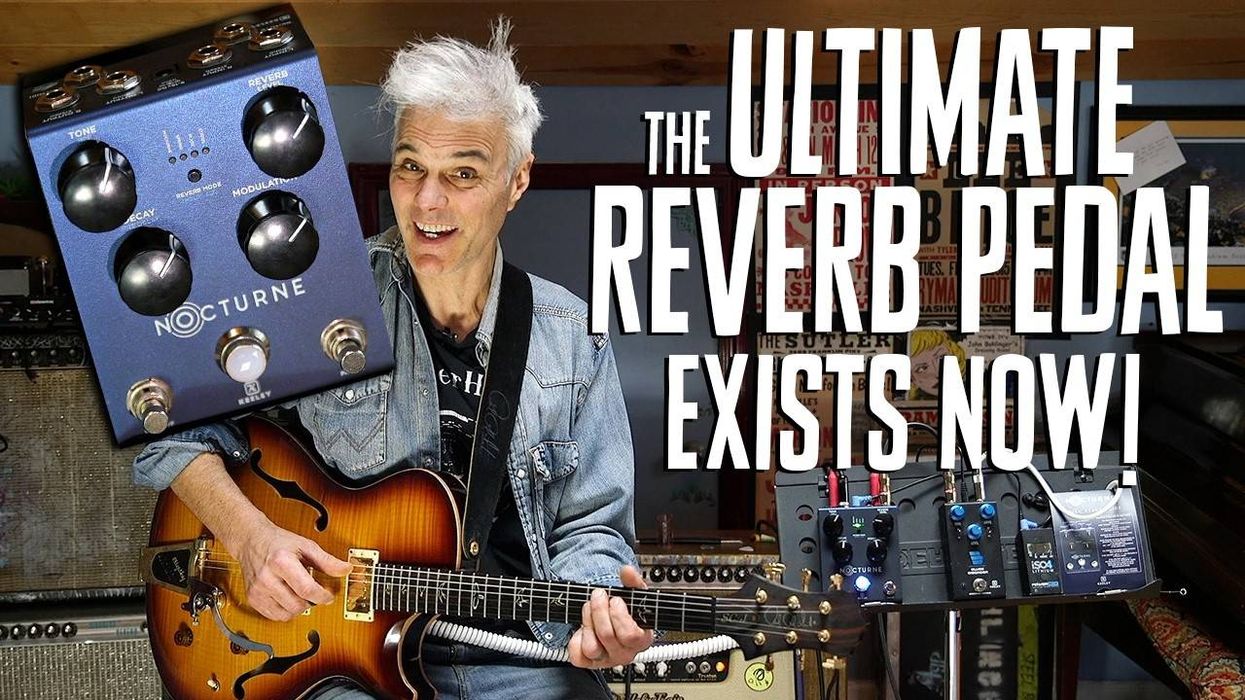

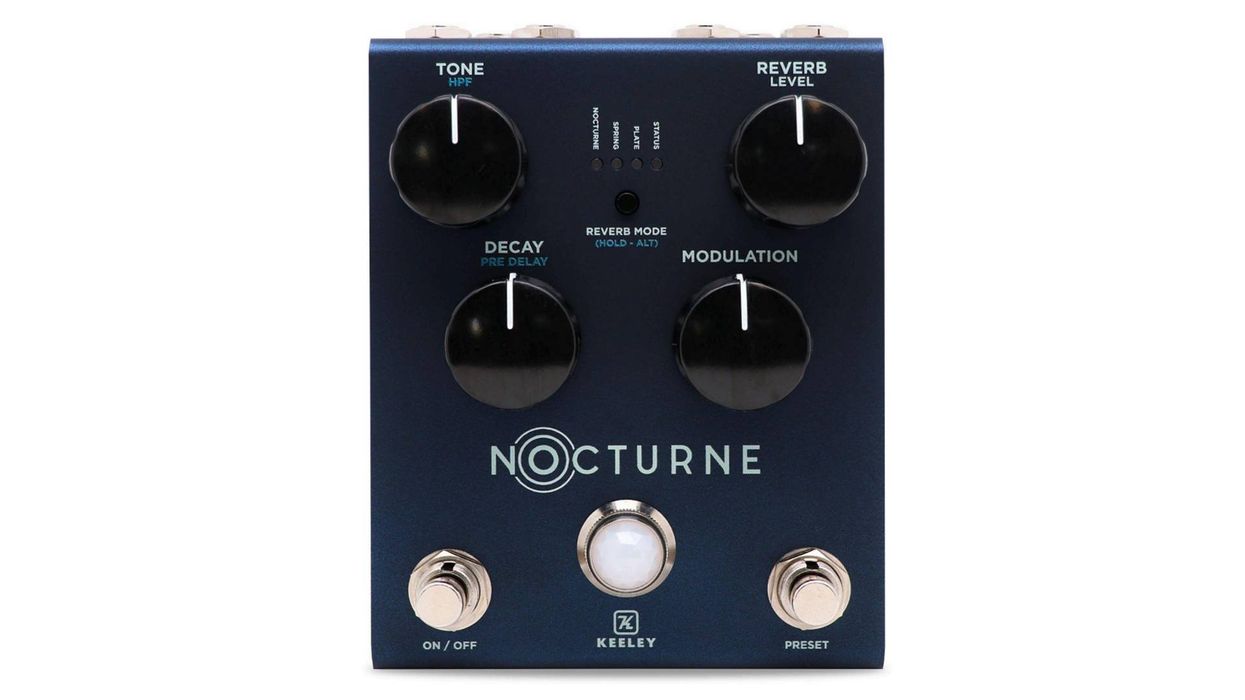
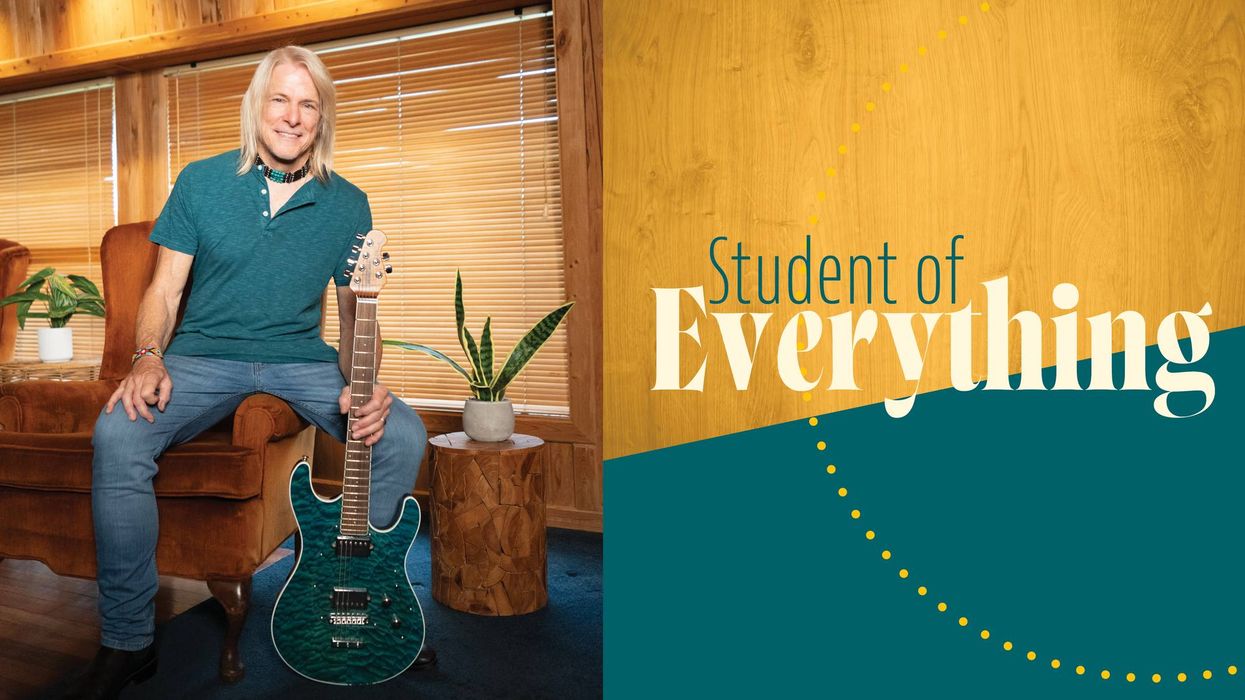
![Rig Rundown: AFI [2025]](https://www.premierguitar.com/media-library/youtube.jpg?id=62064741&width=1245&height=700&quality=70&coordinates=0%2C0%2C0%2C0)












 Shop Scott's Rig
Shop Scott's Rig





